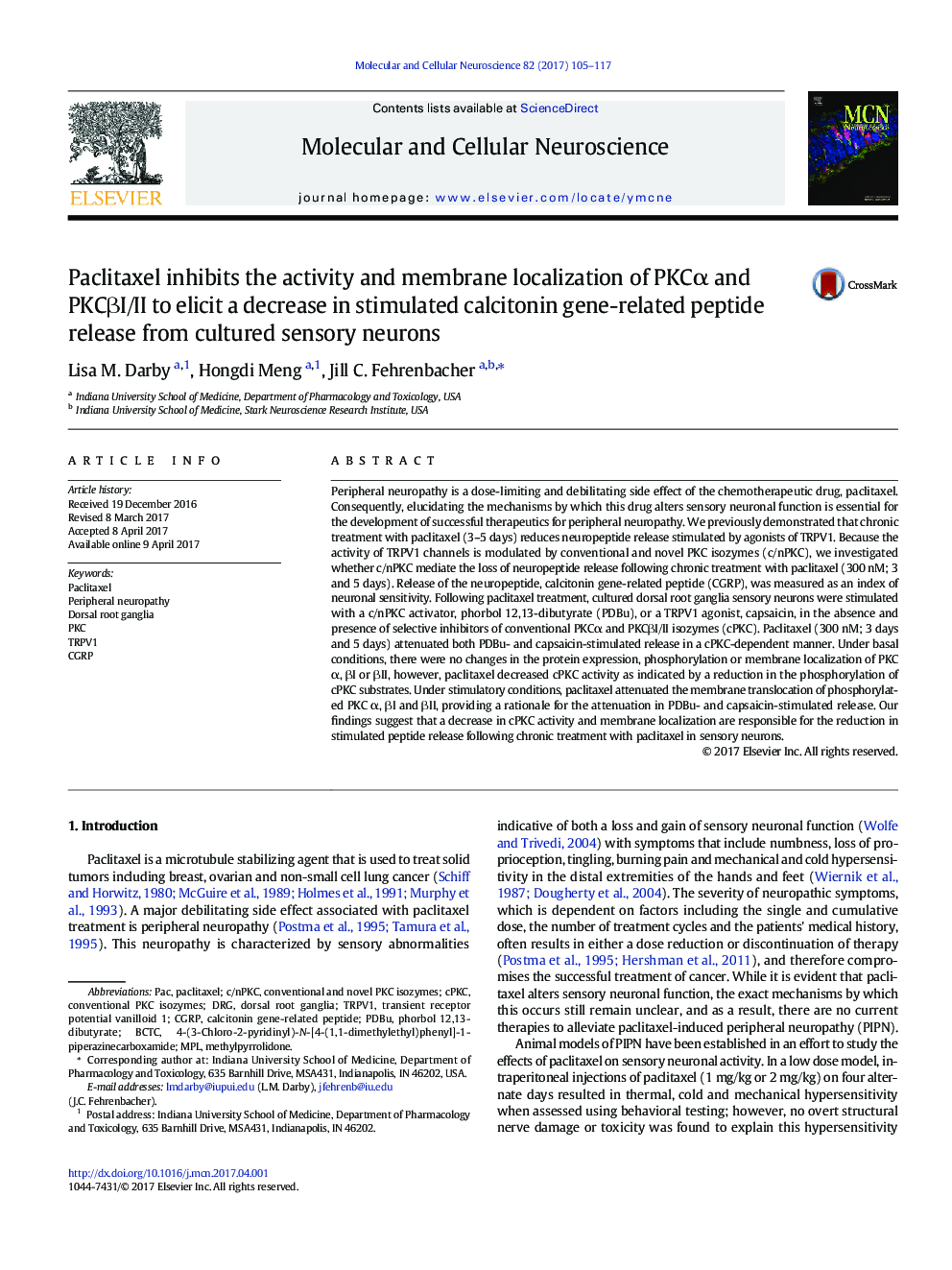| کد مقاله | کد نشریه | سال انتشار | مقاله انگلیسی | نسخه تمام متن |
|---|---|---|---|---|
| 5534350 | 1551124 | 2017 | 13 صفحه PDF | دانلود رایگان |

- Stimulated CGRP release was measured as an index of neuronal sensitivity.
- Paclitaxel attenuates phorbol ester- and TRPV1-stimulated release.
- Paclitaxel inhibits cPKC activity to elicit changes in stimulated release.
- Paclitaxel attenuates phorbol ester-stimulated cPKC membrane translocation.
- Paclitaxel does not affect basal cPKC expression, phosphorylation or localization.
Peripheral neuropathy is a dose-limiting and debilitating side effect of the chemotherapeutic drug, paclitaxel. Consequently, elucidating the mechanisms by which this drug alters sensory neuronal function is essential for the development of successful therapeutics for peripheral neuropathy. We previously demonstrated that chronic treatment with paclitaxel (3-5 days) reduces neuropeptide release stimulated by agonists of TRPV1. Because the activity of TRPV1 channels is modulated by conventional and novel PKC isozymes (c/nPKC), we investigated whether c/nPKC mediate the loss of neuropeptide release following chronic treatment with paclitaxel (300 nM; 3 and 5 days). Release of the neuropeptide, calcitonin gene-related peptide (CGRP), was measured as an index of neuronal sensitivity. Following paclitaxel treatment, cultured dorsal root ganglia sensory neurons were stimulated with a c/nPKC activator, phorbol 12,13-dibutyrate (PDBu), or a TRPV1 agonist, capsaicin, in the absence and presence of selective inhibitors of conventional PKCα and PKCβI/II isozymes (cPKC). Paclitaxel (300 nM; 3 days and 5 days) attenuated both PDBu- and capsaicin-stimulated release in a cPKC-dependent manner. Under basal conditions, there were no changes in the protein expression, phosphorylation or membrane localization of PKC α, βI or βII, however, paclitaxel decreased cPKC activity as indicated by a reduction in the phosphorylation of cPKC substrates. Under stimulatory conditions, paclitaxel attenuated the membrane translocation of phosphorylated PKC α, βI and βII, providing a rationale for the attenuation in PDBu- and capsaicin-stimulated release. Our findings suggest that a decrease in cPKC activity and membrane localization are responsible for the reduction in stimulated peptide release following chronic treatment with paclitaxel in sensory neurons.
Journal: Molecular and Cellular Neuroscience - Volume 82, July 2017, Pages 105-117